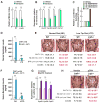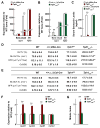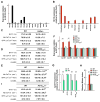Lrp5 controls bone formation by inhibiting serotonin synthesis in the duodenum
- PMID: 19041748
- PMCID: PMC2614332
- DOI: 10.1016/j.cell.2008.09.059
Lrp5 controls bone formation by inhibiting serotonin synthesis in the duodenum
Abstract
Loss- and gain-of-function mutations in the broadly expressed gene Lrp5 affect bone formation, causing osteoporosis and high bone mass, respectively. Although Lrp5 is viewed as a Wnt coreceptor, osteoblast-specific disruption of beta-Catenin does not affect bone formation. Instead, we show here that Lrp5 inhibits expression of Tph1, the rate-limiting biosynthetic enzyme for serotonin in enterochromaffin cells of the duodenum. Accordingly, decreasing serotonin blood levels normalizes bone formation and bone mass in Lrp5-deficient mice, and gut- but not osteoblast-specific Lrp5 inactivation decreases bone formation in a beta-Catenin-independent manner. Moreover, gut-specific activation of Lrp5, or inactivation of Tph1, increases bone mass and prevents ovariectomy-induced bone loss. Serotonin acts on osteoblasts through the Htr1b receptor and CREB to inhibit their proliferation. By identifying duodenum-derived serotonin as a hormone inhibiting bone formation in an Lrp5-dependent manner, this study broadens our understanding of bone remodeling and suggests potential therapies to increase bone mass.
Figures







Comment in
-
When the gut talks to bone.Cell. 2008 Nov 28;135(5):795-6. doi: 10.1016/j.cell.2008.11.007. Cell. 2008. PMID: 19041744
References
-
- Baron R, Rawadi G. Targeting the Wnt/beta-catenin pathway to regulate bone formation in the adult skeleton. Endocrinology. 2007;148:2635–2643. - PubMed
-
- Basselin M, Chang L, Seemann R, Bell JM, Rapoport SI. Chronic lithium administration to rats selectively modifies 5-HT2A/2C receptor-mediated brain signaling via arachidonic acid. Neuropsychopharmacology. 2005;30:461–472. - PubMed
-
- Bhanot P, Brink M, Samos CH, Hsieh JC, Wang Y, Macke JP, Andrew D, Nathans J, Nusse R. A new member of the frizzled family from Drosophila functions as a Wingless receptor. Nature. 1996;382:225–230. - PubMed
-
- Boyden LM, Mao J, Belsky J, Mitzner L, Farhi A, Mitnick MA, Wu D, Insogna K, Lifton RP. High bone density due to a mutation in LDL-receptor-related protein 5. N Engl J Med. 2002;346:1513–1521. - PubMed
Publication types
MeSH terms
Substances
Grants and funding
LinkOut - more resources
Full Text Sources
Other Literature Sources
Medical
Molecular Biology Databases

